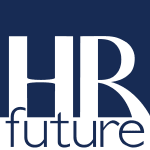Human resource (HR) departments are tasked with hiring and onboarding employees to manage performance reviews and payroll in today’s business world. However, it can be easy for HR professionals to get caught up in the details of these tasks instead of remembering that the goal is always to ensure both employers and employees are happy. A happy employee will mean an employee who is likely to stay with your company. So, taking the time to streamline HR processes is a worthwhile investment.
There are lots of repetitive tasks that HRs have to go through every day. But if you use the right tools, this shouldn’t happen. Because using the right tools means you should be able to improve your HR workflow dramatically and save time.
1. Business Document Templates
Every business enters into agreements with employees, suppliers, partners, and investors. The HR department is often tasked with generating the agreements, templates, and deeds. While this may seem a daunting task, using business document templates helps streamline the process since they are already created and customizable, they will save you time.
Here are some of the HR templates you might need:
- Hiring documents such as a job description template and an interview guide.
- Employee management documents such as employee records and performance review forms.
- Employee benefits-related documents like health insurance forms and leave policies.
- Deeds and commercial agreements between different parties set out the conditions that will govern the relationship.
For example, if you have a stellar employee who wants to increase their pay, they need to fill out an application requesting a raise. This would also include details about their new salary expectations.
2. Human Resource Information System (HRIS)
An HRIS is a tool for storing, managing, and analyzing employee data. An HRIS aims to eliminate the manual storage, organization, and analysis of employee data. This can include information like hiring, benefits, and payroll.
With an HRIS, you can track employee performance management from one centralized location, improve your organizational processes, and ensure that you are meeting legal requirements while providing valuable insights into how your business is performing.
HRIS platforms often offer applicant tracking, benefits management, time and attendance management, and onboarding management. It also has core HR software capabilities, including payroll management, recruiting management, and performance appraisal tools.
3. Applicant Tracking System (ATS)
An ATS is a software that helps HR and recruiters automate the entire process of searching, filtering, and hiring candidates.
How Does An ATS Work?
ATS will scour the web for new applicants after posting your job ad on several job boards. It collects all their applications in one place for easy access by HR staff to review their applications, compare them with each other, eliminate irrelevant ones or rank them according to how well they match the requirements of a job posting. Therefore, employers can focus their time on those more likely to be hired with this information.
Benefits of using an ATS:
- Saves time: Automating tasks like resume screening and candidate tracking eliminates repetitive manual processes that take up most recruiters’ time. This allows recruiters to spend more time building relationships with candidates rather than sifting through resumes all day long.
- Improves sourcing: An ATS integrates directly with websites where the most qualified talents are found. Some systems also offer a ‘talent pool,’ which can help recruiters connect with talented candidates who didn’t make it past previous rounds. Hence, they don’t have to start from scratch every time they have new open positions at their companies.
4. Video Interviewing Software
Video interviewing platforms offer an excellent solution for businesses looking to reduce costs and streamline hiring. This is essential because as the business grows, the time it takes to screen applicants will grow too unless you take steps to automate your screening process. By automating tasks like video interviewing, you can save time and money in the long run.
The trick is choosing the right interview software for your business. There are many different options, so it’s essential to do your research before committing to anything. You want something easy to set up and use, with a solid interface and intuitive controls. Video interviewing platforms should also integrate seamlessly into existing HR workflows without impacting other systems in your company, like scheduling.
5. Employee Scheduling Tools
Employee scheduling is one of the most tedious tasks for HR. However, it’s also one of the most important. If scheduling isn’t done right, you’ll be scrambling to find replacements and forcing employees to come in or work double shifts when they didn’t plan for it. That can cause unnecessary stress and may even increase burnout.
A well-optimized schedule means more productivity, better employee retention, and more satisfied customers. This is why many HR teams turn to employee scheduling software to supplement their existing management platforms. An effective scheduling tool can automate much of the process, reduce costs, and minimize errors. These platforms can even let managers see which employees are available at any given time to avoid last-minute rushes.
6. Employee Self-Service Platforms
Employee self-service platforms are available in a variety of forms. Some are software programs that you have your employees download onto their devices; others are web-based applications you can access through a URL address. Most allow employees to update their contact information, enter time-off requests, check on the status of other requests, and sometimes even submit expense reports or view their paychecks.
These platforms are great for you because they help you go beyond the basics of human resources by giving employees access to more of their data and simplifying your administrative processes. Plus, they’re awesome for the people who work with you—they give your employees more control of their information and allow them to take care of things on their own time instead of waiting for an HR representative to free up.
Conclusion
In the end, taking advantage of one or more of these tools can certainly streamline your HR workflow and make it run more smoothly. Like with any new technology, you may need to experiment a bit to get the hang of things, but once you do, you should be well on your way towards more efficient communication and more proactive HR practices.
Kim Jane is a specialist in Human Resource Management and is based in Australia. She shares her expertise through her blogs and guest posting. During her free time, she likes reading and cycling.







